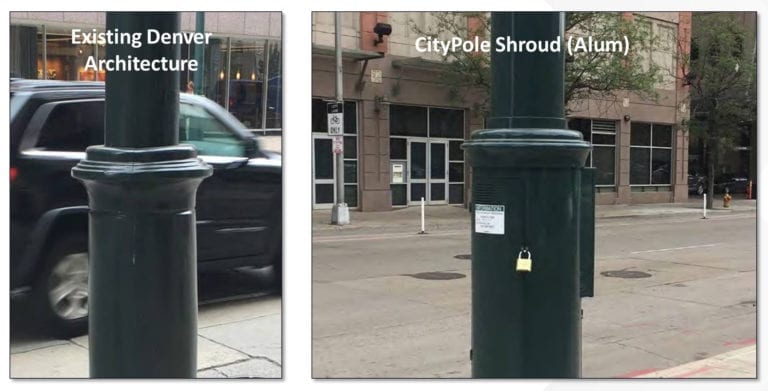Collaboration Speeds Denver Small Cell Deployment

Comptek Technologies is providing Xcel Energy with the first in a series of dual-purpose street light and small cell poles that the company calls CityPoles. The company has engineered the poles to accept 4G and 5G small cell technology. So far, installers have placed 300 small cells in Denver. The CityPole forms the centerpiece of a collaboration among the utility, wireless carriers and the municipal government.
The Denver deployment represents an interesting interplay among policymakers, the city, the telecom industry and the infrastructure providers, according to Mike Hoganson, COO of Comptek Technologies. “The utilities don’t necessarily see themselves as active participants in the telecom environment,” he told AGL eDigest. “What happened in Denver is they got very active.”
Two years ago, Comptek began helping the unified city and county of Denver government put together its small cell standards, because government representatives were concerned that there would be an influx of standalone poles used for small cells that would add to the existing vertical infrastructure such as streetlights… Read More on AGL Media Group

Comptek Technologies is providing Xcel Energy with the first in a series of dual-purpose street light and small cell poles that the company calls CityPoles. The company has engineered the poles to accept 4G and 5G small cell technology. So far, installers have placed 300 small cells in Denver. The CityPole forms the centerpiece of a collaboration among the utility, wireless carriers and the municipal government.

The Denver deployment represents an interesting interplay among policymakers, the city, the telecom industry and the infrastructure providers, according to Mike Hoganson, COO of Comptek Technologies. “The utilities don’t necessarily see themselves as active participants in the telecom environment,” he told AGL eDigest. “What happened in Denver is they got very active.”
Two years ago, Comptek began helping the unified city and county of Denver government put together its small cell standards, because government representatives were concerned that there would be an influx of standalone poles used for small cells that would add to the existing vertical infrastructure such as streetlights… Read More on AGL Media Group










